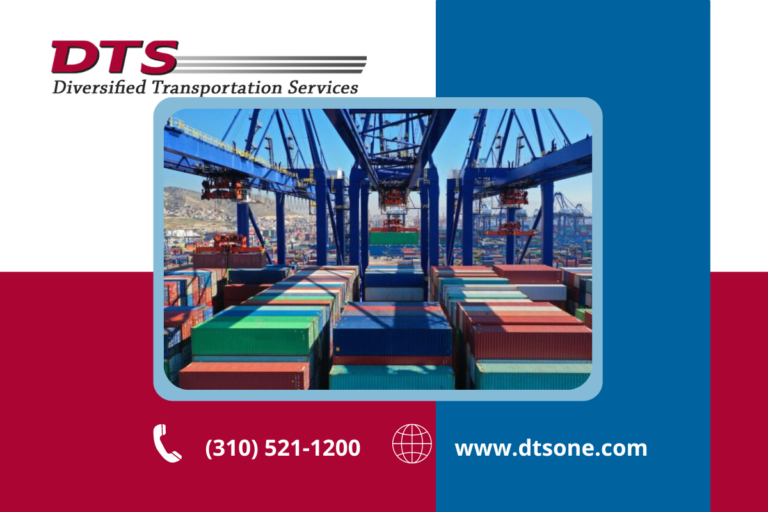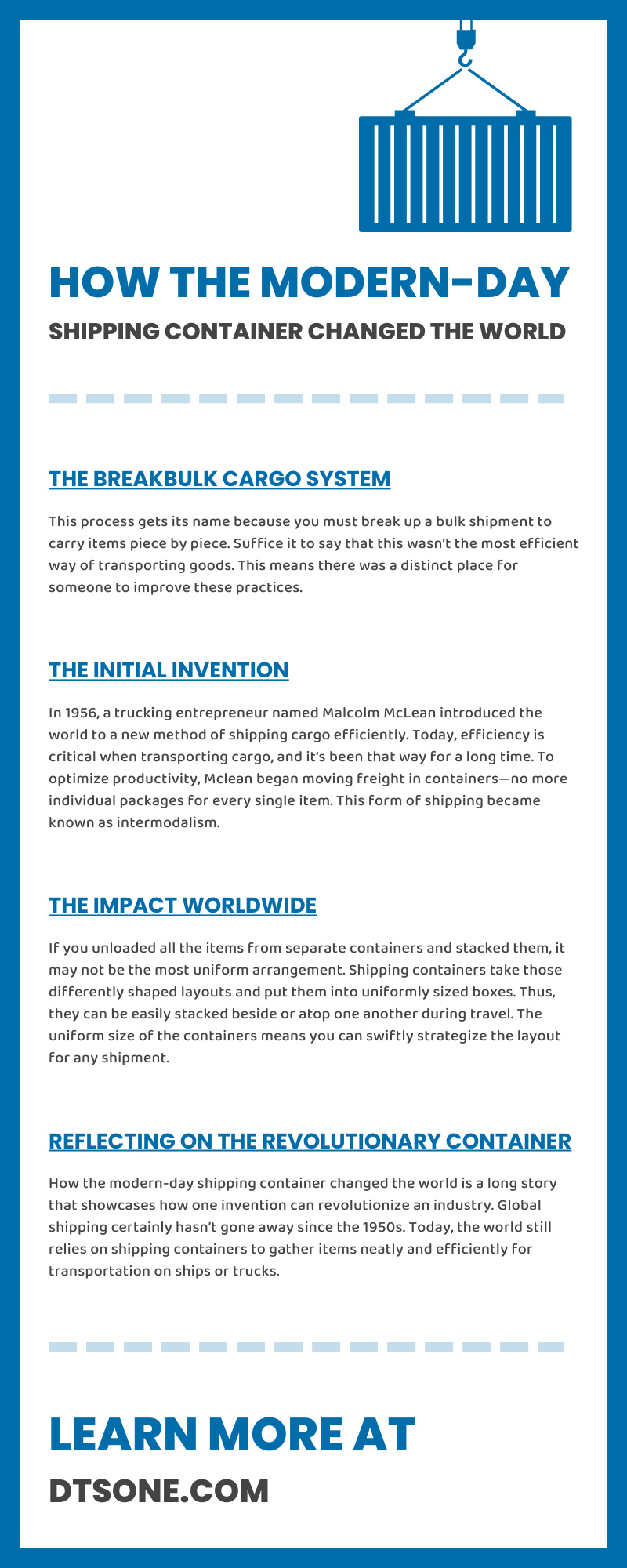
The shipping industry has evolved incredibly over the years, with one of the most significant, if not the most significant, evolutions being the shipping container. A shipping container may seem mundane to the average person nowadays. Still, anyone in the shipping industry can see firsthand how invaluable the container’s design is, from its shape to its durability.
In addition, it’s essential to understand just how substantially these containers elevated the industry. If you want to learn how the modern-day shipping container changed the world, start with our comprehensive guide below. These containers have been around for more than 60 years, and they have made quite a few improvements over that time.
To discover how shipping containers changed the world, we must look at how the world was before their arrival. What needed changing? After all, the need to transport cargo, big and small, has been around for many years. Before the shipping container, there was breakbulk cargo. The breakbulk cargo system refers to a shipment of goods that are carefully loaded and unloaded individually.
This process gets its name because you must break up a bulk shipment to carry items piece by piece. Suffice it to say that this wasn’t the most efficient way of transporting goods. This means there was a distinct place for someone to improve these practices. Both the time and workforce could be effectively used elsewhere, but breakbulk was the way to go for many years. The tide finally began to turn in the 1950s with the invention of the shipping container.
In 1956, a trucking entrepreneur named Malcolm McLean introduced the world to a new method of shipping cargo efficiently. Today, efficiency is critical when transporting cargo, and it’s been that way for a long time. To optimize productivity, Mclean began moving freight in containers—no more individual packages for every single item. This form of shipping became known as intermodalism. McLean’s process focused on smoothly moving cargo from truck to ship and vice versa in one swift movement instead of piece-by-piece. This didn’t just make transitioning from vehicles quicker; it completely revolutionized the process.
Although it didn’t take the world by storm initially, Mclean’s intermodalism had become influential by the 1960s. It wasn’t just the bulk carrying of items that made shipping containers so helpful. An invaluable component of the design is the shape of the cargo containers. Think about all the different shipping containers you’ve seen. They may have differences, such as the colors or brand logos, but the shape is the same. You don’t see many circular shipping containers traveling worldwide, and there’s a reason for that.
Thanks to the specific shape of the containers, cargo could get arranged more uniformly and efficiently. Stackability is critical when carefully arranging cargo on planes, trucks, and more. Why awkwardly cram items together when you can bring more uniformity to freight with high-quality containers? That idea caught on, eventually leaving a lasting impact worldwide.
Intermodalism opened the door to more cost-effective global shipping solutions. Making shipping less laborious and time-consuming is no easy task, but its impact is still felt today. The simple design of a shipping container meant that ports could arrange storage space with more clarity and uniformity.
If you unloaded all the items from separate containers and stacked them, it may not be the most uniform arrangement. Shipping containers take those differently shaped layouts and put them into uniformly sized boxes. Thus, they can be easily stacked beside or atop one another during travel. The uniform size of the containers means you can swiftly strategize the layout for any shipment. Less guesswork, less improvising, and more precise planning had arrived.
Moving a wide range of items in one package means customers get their goods quicker. The customer may not understand the importance of shipping containers and how it affects their ability to receive items quicker. They’ll certainly feel happy when those items arrive on time or sooner. Companies can satisfy customers with reliable delivery times thanks to the modern-day shipping container.
How the modern-day shipping container changed the world is a long story that showcases how one invention can revolutionize an industry. Global shipping certainly hasn’t gone away since the 1950s. Today, the world still relies on shipping containers to gather items neatly and efficiently for transportation on ships or trucks. The shape of a shipping container gives logistics experts a consistent factor they can rely on across many unique orders.
For example, Diversified Transportation Services provides global freight forwarding to help organize and maintain an efficient cargo shipping system. However, that system would look vastly different without the shipping container. A shipping container is versatile enough to carry a wide range of goods, yet those goods can fit inside the same containers. Of course, there are now additional unique ways to ship bulk goods. For instance, some items require refrigeration to remain fresh during travel.
Beyond productivity, shipping containers also provide suitable security for items moving across the globe. A sealed shipping container can keep cargo safe from the elements, whether moving on the ocean, the road, or beyond.
Like boats, trains, and trucks, the shipping container is a tool that continues to be invaluable to the industry and will likely continue for a very long time. Although the shipping container’s invention is incredibly significant, you can still work with your shipping team to move cargo in efficient and innovative ways.
Thus, don’t think about the modern shipping container as using old technology; the hammer has been around for quite a while, too. Reflect on your current process and consider how you can use the modern-day container and more industry tools to push your company forward. The titular technology may appear normal to everyday passersby, but now you know how integral it is in fulfilling worldwide shipments to this very day.

Whether you're a company looking to improve one facet of your supply chain, your entire supply chain, or simply looking for a transportation and logistics consultation, we can help.